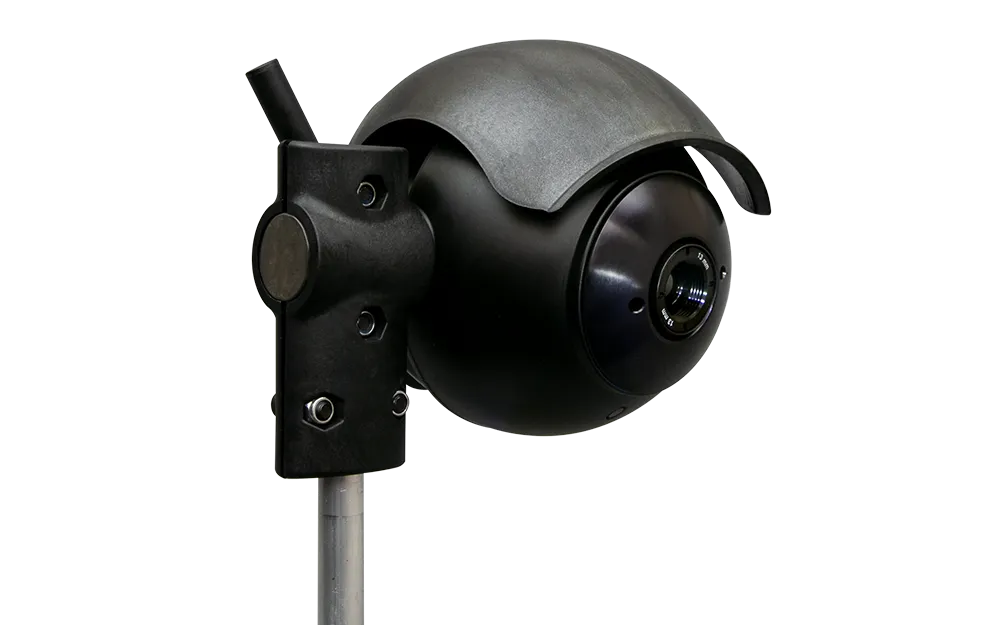
City and highways authorities are under huge pressure to manage and, where possible, to reduce traffic volumes on their networks. Not only are road users demanding fast action on traffic congestion, but regional and national governments are also mandating major reductions in emissions from road transport to meet strict air quality targets.
When it comes to improving traffic management, and overcoming congestion and emissions challenges, city and highways authorities are looking to innovative technologies to help them succeed. One key example is smart video, which allows authorities to understand real-time traffic conditions, and to act more quickly and effectively in the event of an incident or accident.
Smart video provides matchless insights based on real-time traffic awareness. This helps authorities to tackle their congestion and emissions challenges in five important ways.
Improve traffic flow and reduce jams
To take effective action on congestion, authorities need a clear view of traffic load at different times of the day, on busy corridors, and at major junctions.
Smart video provides this critical insight by counting vehicles continually, and by triggering alarms when queues develop, or when traffic volume exceeds pre-defined thresholds.
With a real-time view of traffic, authorities can implement a wide range of initiatives to reduce congestion, from increasing charges at certain times of day, to rerouting traffic during busy periods in collaboration with navigation providers.
Maximise road (and driver) safety
With smart video, alerts can be triggered automatically in the event of an accident. This allows emergency teams to respond faster, and to dispatch the right vehicles and crews to the scene based on specific circumstances and needs – which all helps to improve outcomes for drivers and passengers.
The leading smart video solutions also offer more specialised road safety solutions, such as safety monitoring solutions for road tunnels. Here, AI-enabled cameras offer Automatic Incident Detection (AID) for vehicles travelling the wrong way through tunnels, pedestrians in traffic lanes, obstacles in the tunnel, the presence of fire or smoke, and a range of other hazards that put motorists at risk.
Optimise traffic planning
With smart video, authorities can monitor traffic flows over days, weeks, months and even years to support data-driven planning decisions. This is enabled via AI-powered cameras that support accurate vehicle counting and video data analytics.
In the short term, video analytics allows authorities to identify and address traffic bottlenecks by redesigning junctions or rerouting traffic. In the longer term, it’s possible to plan new infrastructure projects that ease congestion, or to implement congestion charging schemes or other traffic management measures that reduce demand at peak times.
Improve violation enforcement
The latest smart video solutions automatically detect traffic violations, such as forbidden turns, speeding, incorrect use of lanes, vehicles travelling the wrong way in a lane, and illegal parking. Alerts for these and a range of other infractions are generated automatically and forwarded to traffic authorities in real time, supporting faster and more effective responses.

As an additional benefit, smart video solutions that support licence plate recognition can determine if vehicles are properly taxed and insured by cross referencing their details with local authority databases. This makes it possible to identify stolen and uninsured vehicles, reducing risks for other road users.
Support fairer and more effective congestion charging and tolling schemes
AI-enabled smart video solutions can help authorities to apply tolls and charges more fairly based on the characteristics of individual vehicles. This means, for example, that drivers of cleaner vehicles can be charged less, and that more polluting vehicles can be charged more, or prevented from entering restricted traffic areas at busy times.
As an additional benefit, AI-enabled smart video solutions can support dynamic pricing, with higher charges applied when traffic volumes exceed pre-defined levels.
How can Hikvision help?
With cities and highways authorities under significant pressure to reduce congestion and vehicle emissions, Hikvision’s smart ITS solutions are providing major strategic advantages. With real-time traffic awareness and alerts for congestion and traffic incidents, authorities can stay one step ahead to reduce traffic jams. What’s more, Hikvision’s AI-powered solutions can help traffic authorities to make decisions based on video data analytics, and to plan and implement effective traffic management strategies in the long term.
For further information Hikvision’s smart ITS solutions, please visit: https://www.hikvision.com/en/solutions/solutions-by-industry/traffic/traffic-order-management/
You can also find out how Hikvision can help your authority to tackle your most pressing traffic management challenges, at this link: https://www.hikvision.com/en/products/ITS-Products/
Content produced in association with Hikvision










